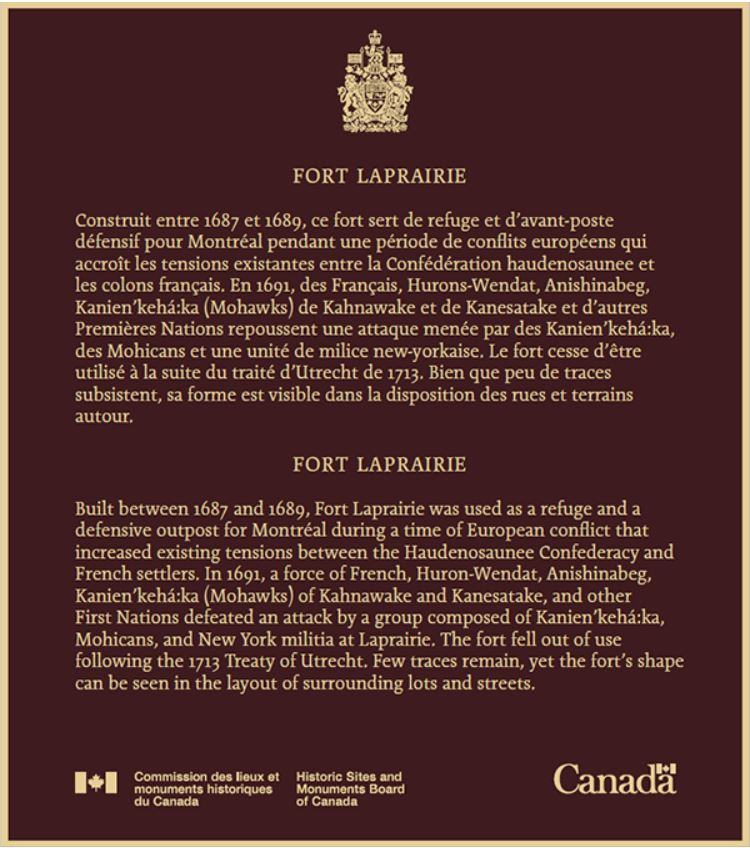Fort Laprairie National Historic Site
Fort Laprairie was designated as a national historic site in 1921.
The Historic Sites and Monuments Board of Canada reviewed this designation in 2021.
Commemorative plaque: Émile-Gamelin Street, La Prairie, QuebecFootnote 1
Fort Laprairie
Built between 1687 and 1689, Fort Laprairie was used as a refuge and a defensive outpost for Montréal during a time of European conflict that increased existing tensions between the Haudenosaunee Confederacy and French settlers. In 1691, a force of French, Huron-Wendat, Anishinabeg, Kanien’kehá:ka (Mohawks) of Kahnawake and Kanesatake, and other First Nations defeated an attack by a group composed of Kanien’kehá:ka, Mohicans, and New York militia at Laprairie. The fort fell out of use following the 1713 Treaty of Utrecht. Few traces remain, yet the fort’s shape can be seen in the layout of surrounding lots and streets.
Review of designation
Reviews are undertaken on an ongoing basis to ensure that designations reflect current scholarship, shifts in historical understandings, and a range of voices, perspectives and experiences in Canadian society.
In 2021, this designation was reviewed due to colonial assumptions, the absence of a significant layer of history, and outdated terminology in the commemorative plaque text. The original text, approved in 1980, did not convey the principal role played by First Nations in the conflict, referring to it solely as an “Anglo-French imperial struggle” and making no reference to First Nations fighting allied with the French. It also used an outdated term for the Indigenous men who fought alongside the New York militia.
The plaque text was modified to reinforce the active participation of First Nations in this history and to remove the outdated terms. The plaque also now refers to the specific First Nations involved in the history it commemorates. Additional information about the tension between the Haudenosaunee Confederacy and French settlers was added to give context to the 1691 battle. A new plaque was installed in 2023.
Source: Historic Sites and Monuments Board of Canada, Minutes, December 2021.
The National Program of Historical Commemoration relies on the participation of Canadians in the identification of places, events and persons of national historic significance. Any member of the public can nominate a topic for consideration by the Historic Sites and Monuments Board of Canada.
- Date modified :

